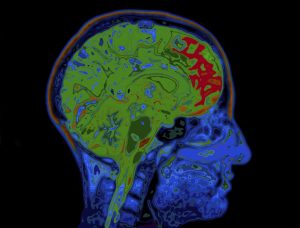 September is Pain Awareness Month, so we present our top articles discussing conditions such as rheumatoid arthritis, dry eye, shingles, fibromyalgia, osteoarthritis, chronic migraines, and chronic pain.
September is Pain Awareness Month, so we present our top articles discussing conditions such as rheumatoid arthritis, dry eye, shingles, fibromyalgia, osteoarthritis, chronic migraines, and chronic pain.
Chronic pain can be a debilitating condition and negatively impact a person’s quality of life. Worse yet, if you don’t know the source of your pain, it can contribute to poor mental health, including depression and anxiety. It’s important to understand the source of your pain in order to obtain the right treatment.
Chronic pain in rheumatoid arthritis explained, pain threshold can be raised by altering brain chemistry
Advertisement
Chronic pain threshold in rheumatoid arthritis may be raised by altering brain chemistry. Pain is a common complaint in rheumatoid arthritis patients, but little is known about the processes that contribute to this pain.
In the U.S. alone, the cost of treating rheumatoid arthritis is estimated at $128 billion, and the condition affects nearly one percent of the population. Treating rheumatoid arthritis (RA) early on can help alleviate the pain experienced by patients in the long run.
There is currently no cure for rheumatoid arthritis, so symptom management is the course of treatment patients undergo. Not only does managing symptoms help alleviate pain, but it can also help improve quality of life as well. Continue reading…
Dry eye linked to chronic pain syndrome
 In a recent study, researchers have found a link between dry eye and chronic pain syndromes. The study was conducted at the Bascom Palmer Eye Institute, which is part of the University of Miami Health System. The findings suggest that if patient outcomes have to improve, there is a need for a paradigm shift in the diagnosis and treatment methods currently employed.
In a recent study, researchers have found a link between dry eye and chronic pain syndromes. The study was conducted at the Bascom Palmer Eye Institute, which is part of the University of Miami Health System. The findings suggest that if patient outcomes have to improve, there is a need for a paradigm shift in the diagnosis and treatment methods currently employed.
According to statics released by the American Eye Institute, about three million Americans get affected by dry eye syndrome every year. It is a condition in which the eyes do not produce an adequate supply of tears or the tears evaporate too quickly from the surface of the cornea. Because of the resulting dryness, patients develop an “itchy” or painful sensation. The eyes can become oversensitive to wind or light, or develop spontaneous pain typically associated with nerve injury. If left untreated, the risk of developing inflammation, ulcers, or corneal scars is high. Continue reading….
Shingles-related chronic pain, known as neuropathic pain, caused by nerve damage can be treated with new drug
 Shingles-related chronic pain – known as neuropathic pain – caused by nerve damage can be treated with a new drug. This drug may also be able to combat neuropathic pain experienced in HIV, diabetes, nerve injury, and cancer chemotherapy. The new drug not only targets mechanisms omitted by the already existing drugs but its side effects too, often are unpleasant or disabling.
Shingles-related chronic pain – known as neuropathic pain – caused by nerve damage can be treated with a new drug. This drug may also be able to combat neuropathic pain experienced in HIV, diabetes, nerve injury, and cancer chemotherapy. The new drug not only targets mechanisms omitted by the already existing drugs but its side effects too, often are unpleasant or disabling.
The study involved 183 patients with post-herpetic neuralgia from six countries. The new drug – EMA401 – was found to reduce pain without any serious side effects.
Lead author Andrew Rice said, “Conventional painkillers don’t tend to help people with severe chronic neuropathic pain and most available treatments have modest efficacy and/or are limited by side effects. We are therefore keen to find new ways of providing these people with some relief. A positive trial like this in such a challenging condition as post-herpetic neuralgia, for a drug that acts in a new way, is unusual and very exciting. We hope that the new drug will ultimately offer hope for patients who aren’t helped by current treatments.” Continue reading…
Fibromyalgia pain and osteoarthritis linked in how brain experiences chronic pain
 Fibromyalgia pain and osteoarthritis are linked in how the brain experiences chronic pain. Osteoarthritis is a disease in which cartilage is worn down, allowing the bones of the joints to rub together. This can be quite painful and lead to stiffness and chronic pain. A condition with unknown causes, fibromyalgia also results in chronic pain and an increase in pain sensitivity.
Fibromyalgia pain and osteoarthritis are linked in how the brain experiences chronic pain. Osteoarthritis is a disease in which cartilage is worn down, allowing the bones of the joints to rub together. This can be quite painful and lead to stiffness and chronic pain. A condition with unknown causes, fibromyalgia also results in chronic pain and an increase in pain sensitivity.
Fibromyalgia and osteoarthritis may often be confused with one another due to the associated stiffness, sleep disturbances, and chronic pain, but they are two different diseases. It is important to note that at least 13 percent of osteoarthritis patients will suffer fibromyalgia as well.
The findings on the fibromyalgia pain and osteoarthritis link come from the Arthritis Research Facility in the U.K., revealing brain abnormalities and the link to chronic pain in osteoarthritis sufferers. The researchers concluded that there is a new form of therapy to target certain brain mechanisms that can help the mind cope with chronic pain. Continue reading…
Fibromyalgia pain in women linked to chronic migraine
Advertisement
 Fibromyalgia (FM), a chronic and widespread pain condition, is linked to chronic migraines in women. Research has found that symptoms can worsen after a headache or migraine, suggesting that migraines may trigger fibromyalgia pain.
Fibromyalgia (FM), a chronic and widespread pain condition, is linked to chronic migraines in women. Research has found that symptoms can worsen after a headache or migraine, suggesting that migraines may trigger fibromyalgia pain.
The study included 203 women divided into five groups: 40 fibromyalgia patients, 41 high-frequency episodic migraine patients, 40 chronic migraine patients, 42 fibromyalgia with high-frequency episodic migraine patients, and 40 fibromyalgia patients with chronic migraines.
In a second phase of the study, 86 fibromyalgia and frequent episodic migraine patients were divides into two groups: 47 received migraine treatment and 39 did not receive treatment. Continue reading…
